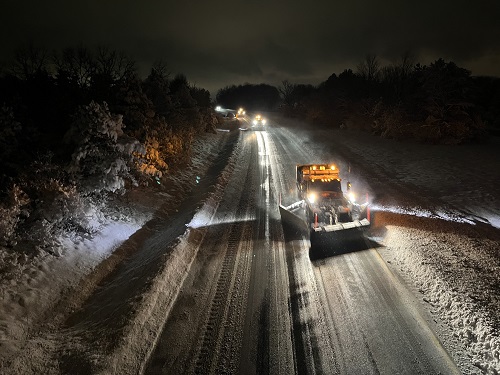Across the country, state departments of transportation are gearing up for the winter season – with several already wrapping up their first brushes with major snowstorms.
[Above photo by NYSDOT]
The New York State Department of Transportation, for example, has already faced several storms that have dumped several feet of snow on parts of the Empire State.
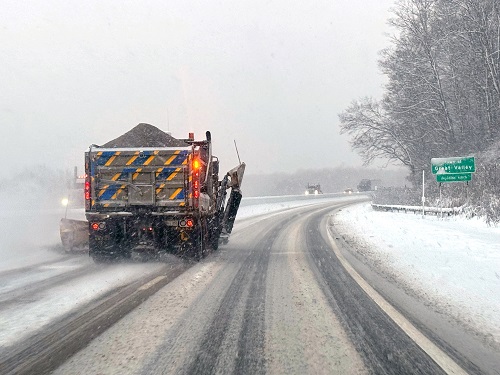
NYSDOT is also going to spearhead a new $100 million effort to improve the resiliency of 551 lane miles of state highways in 70 locations statewide impacted by extreme weather.
“Between extreme heat in the summer, devastating winter storms and the ongoing saga of freeze-thaw cycles, New York’s roads take a pounding from extreme weather in all seasons, and this investment takes direct aim at rejuvenating some of the State highways most impacted by extreme weather,” Governor Kathy Hochul (D) explained in a statement.
“Keeping our infrastructure in a state of good repair is a sound investment that not only increases resiliency but spurs economic development and tourism across New York,” she added.
[Editor’s note: Specialized training for snow equipment operators is also a tactic state DOTs are using to help better preserve pavement during winter operations, as illustrated in the video below by the Wyoming Department of Transportation.]
“Targeted infrastructure investments not only enhance public safety, but the resiliency and sustainability of New York’s vast network of roads and bridges,” added NYSDOT Commissioner Marie Therese Dominguez. “Smart transportation investments have the ability to bring people and communities together, and that’s just what this investment in our critical infrastructure will do across New York State.”
From a similar “people perspective,” the Illinois Department of Transportation, Illinois State Police, and Illinois Tollway worked together again on their joint “Winter Weather – Get it Together” campaign to help motorists be prepared for winter driving conditions.
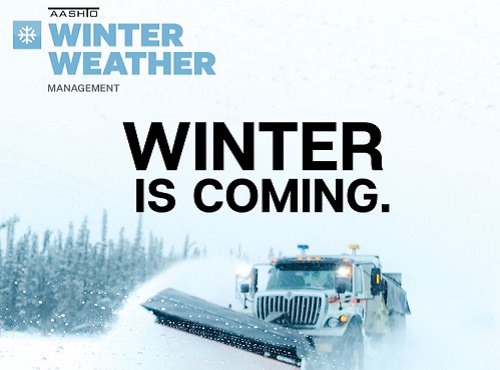
[Editor’s note: The American Association of State Highway and Transportation Officials offers the Winter Weather Management technical service program to help states improve their winter maintenance operations through a wide variety of resources.]
For this winter season, Illinois DOT has more than 1,800 trucks available for deployment to plow almost 45,000 lane miles of roads statewide, with its “salt domes” at full capacity holding more than 542,000 tons of material.
“You don’t want to be caught by surprise and unprepared,” stressed Omer Osman, Illinois DOT secretary, in a statement. “Our team at Illinois DOT spends the entire year getting ready for winter by bringing in extra help, stocking up on materials and making sure our equipment is ready to go. By doing your part now, we can ‘Get it together’ and make this the safest winter ever on Illinois roads.”
That includes reminding motorists to give snowfighting crews plenty of room to operate out on the road, noted Jim Gray, secretary of the Kentucky Transportation Cabinet.
“Safety on our roadways is a team effort between state crews and the public,” he explained in a statement. “Our road crews brave the elements to treat and clear roads, and motorists can do their part by slowing down and giving our folks plenty of room to operate.”
[Editor’s note: Some state DOTs, similar to what the Wyoming DOT does in the video below, are now providing “defensive driving” training to their snow equipment operators to help reduce the risk of crashes.]
KYTC noted that it uses a four-tier system to prioritize treatment and snow clearing on state-maintained routes, with priority route designations based on factors such as traffic volume and connectivity to critical services, such as hospitals. During routine snow and ice events, KYTC said its crews operate using snow and ice priority route maps for maximum equipment and materials usage efficiency.
Meanwhile, the Texas Department of Transportation said it began its annual winter prep activity back in October, which includes a full inventory of supply stockpiles needed to pretreat and winterize roads; making sure radio communication is in place; checking personal protection equipment; coordinating personnel schedules; plus testing and calibrating snow removal equipment.
That effort not only includes internal coordination among TxDOT’s many districts but also collaboration with other state DOTs in New Mexico, Oklahoma, Arkansas, and Louisiana.
“The safety for our employees and the traveling public is our priority,” said TxDOT El Paso District Engineer Tomas Treviño in a statement. “We want to be proactive, as it is critical to be ready for inclement conditions and it is safer to pretreat roads ahead of any storm.”
The West Virginia Department of Transportation follows the same philosophy as part of its annual Snow Removal and Ice Control or SRIC operations plan.
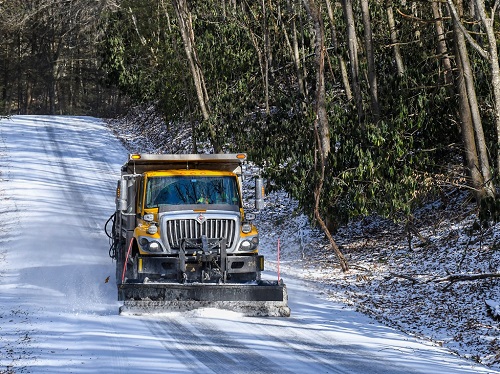
Statewide, the West Virginia Department of Highways – a division of WVDOT – has stockpiled more than 231,000 tons of salt, with more than 1,000 snowplows set to cover all 55 counties. A typical snowplow holds 12 tons of salt, enough to treat about 100 lane-miles of road, noted Joe Pack, WVDOH’s chief engineer of operations; roughly equating to coverage for about a 50-mile stretch of two-lane road, or about 25 miles of four-lane.
“Our operators are assigned to continue to perform SRIC operations until all roads are addressed – on a 24-hour, seven-day-per-week basis,” he explained in a statement. “Trucks and drivers are always on standby and ready to address roadway conditions hours before the snow begins falling. Drivers will stay on patrol within their assigned areas, until the storm passes and conditions improve.”
WVDOT noted that its snow equipment operators are available to hit the roads in 12-hour shifts when storms hit. And if WVDOT knows a storm is coming and if conditions are cold and dry, the agency said its crews may pre-treat roads ahead of the snow with brine to make it harder for snow to stick and make it easier for plows to scrape snow from the road surface. But if it’s wet and rainy, the brine would just wash away, so no pre-treatment is conducted, WVDOT said.
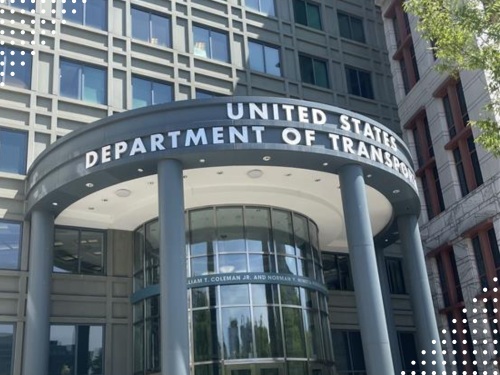 Top Stories
Top Stories
USDOT Makes $1.5B Worth of BUILD Grants Available
December 19, 2025 Top Stories
Top Stories
